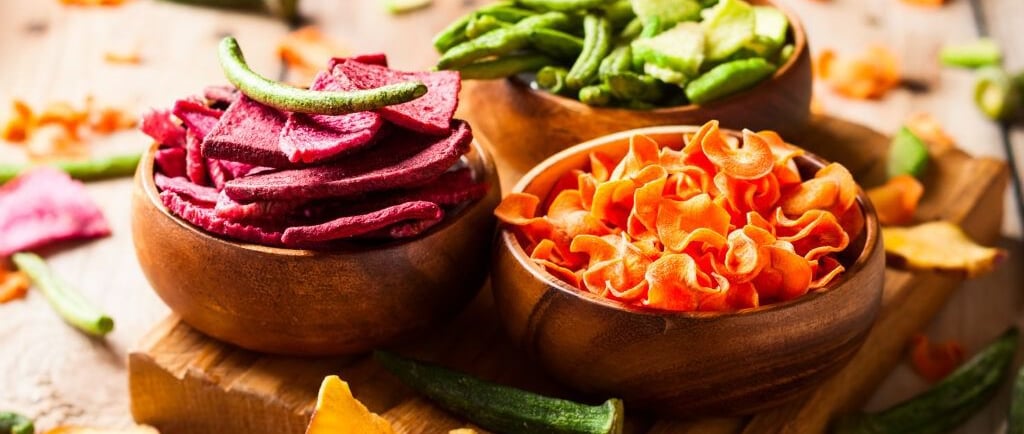A comparative analysis of freeze-drying with other food preservation methods (e.g., air-drying, dehydration), emphasizing its unique advantages for specific applications.
This article compares food drying methods, highlighting how freeze-drying's superior retention of nutrients, flavor, and texture makes it ideal for China's premium snack, dairy, and pet food markets.
FOOD PRESERVATIONSUSTAINABILITYPRODUCTIONCOOKINGGROWINGFREEZE DRIED FOODSFREEZE DRYINGFREEZE DRIED PRODUCTSTECHNOLOGYBUSINESS
8/6/20253 min read


A comparative analysis of freeze-drying with other food preservation methods (e.g., air-drying, dehydration), emphasizing its unique advantages for specific applications.
In the rapidly evolving landscape of China's food market, consumer demands are shifting towards products that are not only convenient and long-lasting but also retain the fresh taste, nutritional value, and natural appearance of the original ingredients. While traditional preservation methods like air-drying and dehydration have long been mainstays, a more advanced technology—freeze-drying—is emerging as a premium solution, offering a compelling set of advantages that are particularly well-suited to the modern Chinese consumer and specific high-value applications.
Traditional Drying Methods: The Trade-Offs
Traditional drying techniques like air-drying and dehydration rely on heat to remove moisture from food. This process, while effective at extending shelf life by inhibiting microbial growth, comes with significant trade-offs.
* Nutrient and Flavor Loss: High temperatures can degrade heat-sensitive vitamins and antioxidants, as well as alter the volatile compounds responsible for a food's natural aroma and flavor.
* Texture and Appearance Changes: The heat-induced shrinking and toughening of food often results in a dense, chewy, or brittle texture and a noticeable change in color. Think of a shriveled raisin versus a plump grape. The physical structure of the food is fundamentally altered.
* Longer Rehydration Time: Dehydrated foods, with their dense structure, often require a longer soaking time to rehydrate, making them less convenient for the fast-paced lifestyles of many urban Chinese consumers.
These limitations, while acceptable for certain products (e.g., dried mushrooms, herbs), present a challenge for applications where preserving the integrity of the food is paramount.
The Freeze-Drying Difference: A Superior Approach
Freeze-drying, or lyophilization, is a sophisticated preservation method that circumvents the drawbacks of traditional drying. It involves three key stages: freezing the food, placing it in a vacuum, and then allowing the frozen water to sublimate directly from a solid to a gas, bypassing the liquid phase. This unique process provides a host of advantages that make it a standout in the China market.
* Exceptional Nutrient and Flavor Retention: By operating at very low temperatures, freeze-drying avoids the heat-induced degradation of nutrients and flavor compounds. The result is a product that, upon rehydration, closely resembles its fresh counterpart in terms of taste and nutritional profile. This is a significant selling point for health-conscious consumers.
* Preservation of Original Structure: The sublimation process leaves behind a porous, spongy structure that maintains the food's original shape, color, and size. This not only makes for a more visually appealing product but also allows for rapid and complete rehydration, a crucial convenience factor for modern consumers who value efficiency.
* Extended Shelf Life without Preservatives: By removing up to 98% of the moisture content, freeze-drying effectively halts microbial activity and enzymatic reactions. This provides a long shelf life—often several years—without the need for added preservatives, aligning with the growing consumer preference for "clean label" products.
* Lightweight and Convenient: The finished freeze-dried product is extremely lightweight, making it easy to store, transport, and carry. This is a major advantage for applications like portable snacks, camping food, or emergency rations.
Applications Where Freeze-Drying Excels in China
The unique benefits of freeze-drying are unlocking new possibilities and driving growth in specific market segments within China.
* High-Value Snacks and Ready-to-Eat Meals: For fruits, vegetables, and even meats, freeze-drying creates a new category of premium snacks and instant meals. Freeze-dried fruits, for example, offer a crispy texture and intense flavor without any added sugar or oil, appealing to the desire for healthy and natural options. Instant soups and porridge that contain freeze-dried vegetables and meats can be rehydrated in minutes, providing a nutritious and convenient meal for busy professionals.
* Dairy Products: The dairy sector is a particularly fast-growing application for freeze-drying in China. Freeze-dried yogurt bites and cheese snacks offer a unique texture and a long shelf life, making them ideal for children's snacks or on-the-go consumption.
* Pet Food: In the rapidly expanding pet food market, freeze-dried raw meat and treats are gaining popularity. They offer a nutrient-dense, palatable, and convenient alternative to traditional dry kibble, appealing to pet owners who prioritize the health and well-being of their animals.
* Traditional Chinese Medicine (TCM): The preservation of delicate and heat-sensitive bioactive compounds in TCM ingredients is critical. Freeze-drying is an ideal method for preserving the potency of these materials, ensuring product quality and efficacy.
Conclusion
While traditional drying methods remain relevant for their simplicity and cost-effectiveness, they fall short of meeting the demands of a discerning Chinese market that increasingly values product quality, naturalness, and convenience. Freeze-drying, despite its higher initial cost and energy consumption, is proving to be a superior technology for preserving a wide range of food products. Its ability to retain the original flavor, nutritional value, and physical structure of food makes it a perfect fit for premium snacks, convenient meals, and specialized applications where quality is the ultimate differentiator. As China's food industry continues to innovate and cater to evolving consumer preferences, freeze-drying is poised to play an increasingly central role, solidifying its position as a key technology for the future of food preservation.
